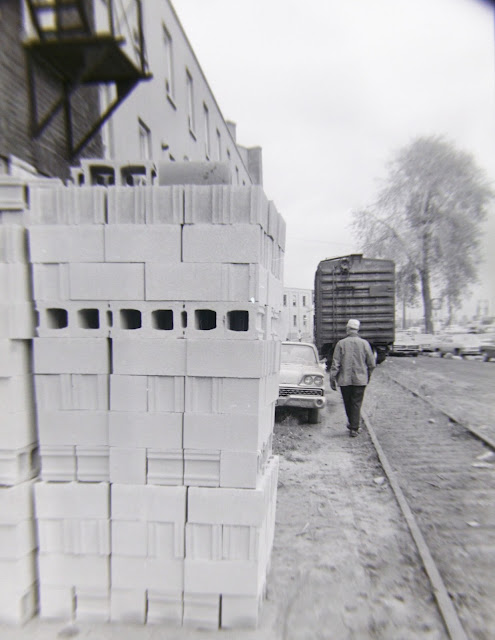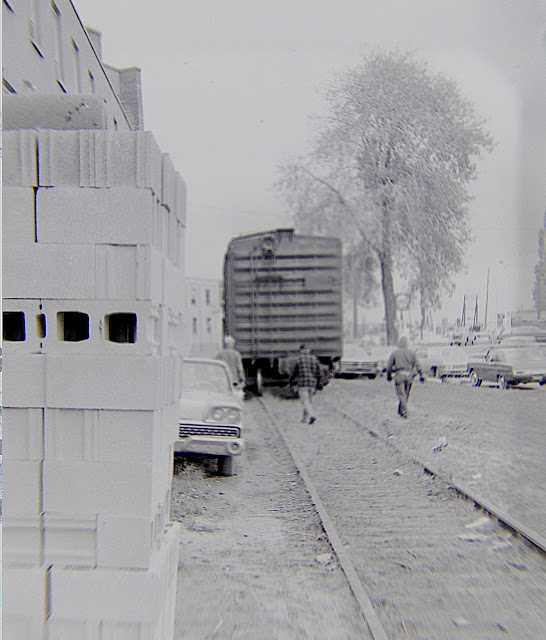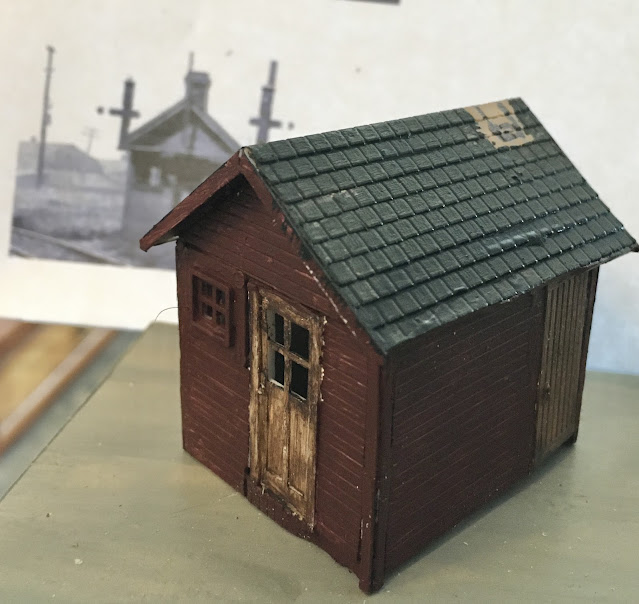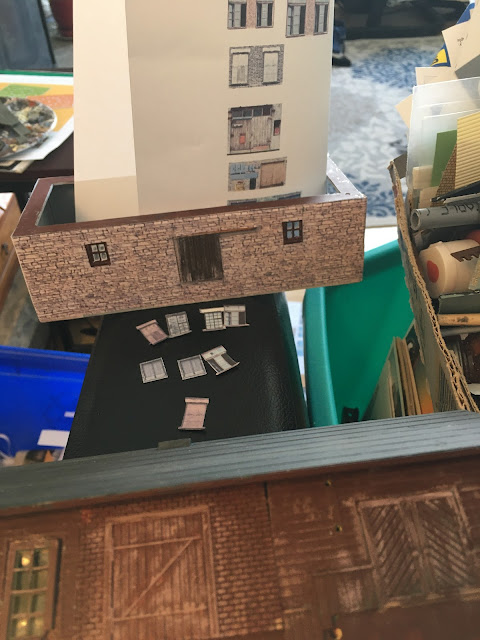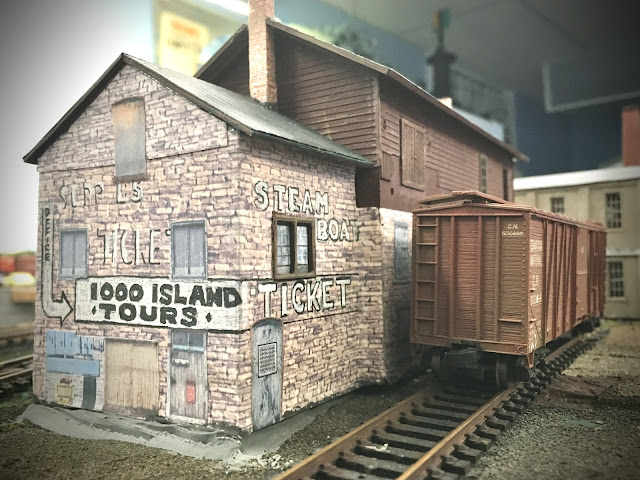
This memory train keeps on running through some recently-published posts. First, I published a post on that
'tight squeeze' CN switching puzzle which then led to a correction to the original Whig captioning by fellow rail enthusiast and former Kingston resident John Mayell. That in turn led to a post on
40-year CN employee Ron Sturgess. Then, that post unlocked some further memories from John Mayell and led to the creation of this post!
(Top photo - CN 3103 at the Outer Station on June 17, 1977 with the CN Express shed and trucks in the background - Robert Farkas photo)
Here are John's memories of CN switching, the Outer Station, and even his potential railway employment! The good news for me is that John's memories shed some much-wanted light on how CN switched Kingston in my modelled era, especially since I have just backdated that era from circa 1970 to the late 1960s, coincident with the CP trackage moving out of downtown in 1966. Take it away, John...
Ron's name has sparked some good memories, I'd like to share a few with you.
Back around 1967 there was one yard job out of Kingston that worked some very long days. They switched the Hanley Spur, did Outer Station yard work, switched the Alcan plant and the Cataraqui Spur. Ron Sturgess was the Conductor on that job. At that time there was also a job called the Gan[anoque] Turn that ran east out of Belleville early every morning, usually with an RS-18 for power. Eastbound they worked C-I-L at Millhaven, sometimes they had set-outs at Kingston, then down to Gananoque to work the spur which always included cars for Stelco and occasionally Cow & Gate. Westbound back to Kingston, they usually arrived around 4 p.m. where they would pull into the north yard at the main line switch east of Elliott Avenue. Their Kingston work was to lift any Belleville cars that may be in the yard and then cross over both mains into the south yard (right behind my house) and grab the L-C-L express boxcar that was spotted next to the metal CN Express shed. This car was not ready to go until all the CN Express trucks had returned from their routes and their packages were loaded into the Belleville bound car. Many times they would couple up to the car and wait for the trucks to arrive, but they could only wait until a certain cut-off time. They needed to leave enough time to make the move back onto their train in the north yard and get out of town westbound to Belleville ahead of the passenger trains. This was back in the directional running and train-order days.
I was sitting on a pile of ties watching the Gan Turn switching in the yard after school one summer day in 1967 when I was invited into the cab by the engineer on this job, Mike Hogan. He had noticed me numerous times and realized I had been bitten by the 'railroad bug' and invited me to come back any time. Mike liked buttermilk, so I would occasionally go to Art's Groceteria across from the station with 35 cents, buy a quart of Brookside Dairy buttermilk and meet the train down at the switch where they entered the yard. It made Mike smile and I learned to like buttermilk too! I rode with them in the yard almost every day until the job was abolished, I think in the summer of 1968, and a second yard job was established in Kingston. Ron Sturgess was the conductor on the East Kingston job that worked the Hanley Spur, the yard itself and Gananoque while the West job worked Alcan, Permanent Concrete, the Counter Street team track and the Cataraqui Spur.
The two yard jobs alternated the weekend work, with Ron's job doing Saturday. They would usually only work DuPont and the goal was to get back to the west end of the Cataraqui Spur and out on the main eastbound before CN Passenger Train No 60 showed up which was scheduled by Collins Bay at 1117. I rode with Ron's job almost every Saturday.
John continues the story with his hopes for a railway career...
Ron took a fall in the yard one winter and was off for a while with his injury. When he returned he took the Railiner conductor job that ran Kingston to Toronto and returned each day. I was trying to hire on to the railway but had to wait until I was 18 years old, so in the summer of 1970 I put my application at CNR Belleville, CPR Smiths Falls, CNR Brockville and thanks to Ron's generosity I got a free trip to Toronto on the Railiner to put my name in there as well. At that time CNR had just hired a bunch of guys at Belleville, so I was out of luck there. CPR in Smiths Falls put my application into the "no family working for CPR" pile and told me not to hold my breath. The Toronto trip was fun, but they already had a few hundred applications in the pile and my chances there were slim to none. The Brockville application was the surprise....
My father had an electrical business and I had worked there since I was 15 stripping electric motors, digging trenches for wiring, sweeping up and eventually as an electrician's helper. It looked like the dream railroad job wasn't going to happen, so my Dad encouraged me to register for an electrician apprenticeship. Back in those days you were indentured to the employer, so it was at least a 4 year commitment. I took his offer and was about 2 months into the apprenticeship when I got a letter from CNR offering me a chance at a brakeman position in Brockville! What to do? I recall the CNR official's name was I think a Mr. Jockinen, so I called him up and told him I was in an apprenticeship and was unable to take his offer. I'll never forget his reply: "You got a chance at a trade, you take it, and stay away from the %^&*$# railroad"!




